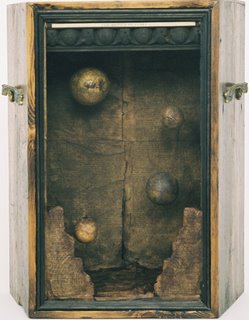 "I should disclose and publish to the world the occasion of discovering and observing four Planets, never seen from the beginning of the world up to our own times, their positions, and the observations made during the last two months about their movements and their changes of magnitude; and I summon all astronomers to apply themselves to examine and determine their periodic times, which it has not been permitted me to achieve up to this day . . . On the 7th day of January in the present year, 1610, in the first hour of the following night, when I was viewing the constellations of the heavons through a telescope, the planet Jupiter presented itself to my view, and as I had prepared for myself a very excellent instrument, I noticed a circumstance which I had never been able to notice before, namely that three little stars, small but very bright, were near the planet; and although I believed them to belong to a number of the fixed stars, yet they made me somewhat wonder, because they seemed to be arranged exactly in a straight line, parallel to the ecliptic, and to be brighter than the rest of the stars, equal to them in magnitude . . .When on January 8th, led by some fatality, I turned again to look at the same part of the heavens, I found a very different state of things, for there were three little stars all west of Jupiter, and nearer together than on the previous night.
"I should disclose and publish to the world the occasion of discovering and observing four Planets, never seen from the beginning of the world up to our own times, their positions, and the observations made during the last two months about their movements and their changes of magnitude; and I summon all astronomers to apply themselves to examine and determine their periodic times, which it has not been permitted me to achieve up to this day . . . On the 7th day of January in the present year, 1610, in the first hour of the following night, when I was viewing the constellations of the heavons through a telescope, the planet Jupiter presented itself to my view, and as I had prepared for myself a very excellent instrument, I noticed a circumstance which I had never been able to notice before, namely that three little stars, small but very bright, were near the planet; and although I believed them to belong to a number of the fixed stars, yet they made me somewhat wonder, because they seemed to be arranged exactly in a straight line, parallel to the ecliptic, and to be brighter than the rest of the stars, equal to them in magnitude . . .When on January 8th, led by some fatality, I turned again to look at the same part of the heavens, I found a very different state of things, for there were three little stars all west of Jupiter, and nearer together than on the previous night."I therefore concluded, and decided unhesitatingly, that there are three stars in the heavens moving about Jupiter, as Venus and Mercury around the Sun; which was at length established as clear as daylight by numerous other subsequent observations. These observations also established that there are not only three, but four, erratic sidereal bodies performing their revolutions around Jupiter."
Galileo Galilei, SIDEREUS NUNCIUS, March 1610.
This week I’ve been looking at Johann Dieter Wassmann’s little-known 33-piece suite “Der Ring des Nibelunge,” 1896. Each work in this remarkable ensemble takes the form of a pine box, shaped as an isosceles trapezoid, with the glass front constituting the smaller of the two parallel planes. When assembled in three groups, 11 boxes are positioned to form a circle, with the fronts facing inward, toward one another, rather than outward toward the viewer.
The last of these three groups shows Johann’s strong fascination with an increasingly reductive notion of pure space, space nearing the void of deep space itself. In each of these boxes the sole structural element is one or more planetary forms, but rather than being highly descriptive, these elements are depicted as nothing more than aged brown balls, leaving the focus of our attention on the void itself. The inner surface of these boxes is lined with heavily-stained text, in the case of the work above text from a 19th century French-German dictionary. “The Moons of Galileo” is sufficiently descriptive to allow us to identify the individual moons – from top to bottom, Ganymede, Europa, Callisto and Io – but grouped alone, without Jupiter, they are purposely lost at sea.
This metaphor of complete and possibly abject isolation – the isolation not of the void, but of the individual within the void – came to dominate much of Johann’s output in the remaining 18 months of his life.

No comments:
Post a Comment